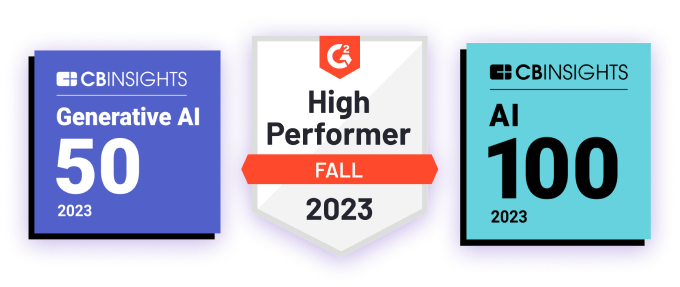

Monitor, improve, and trust your
Enable observability to detect data and ML issues faster, deliver continuous improvements, and avoid costly incidents.
No credit card needed. Sign up for the free Starter plan today.
Trusted by:
Detect, prevent, and mitigate
risk in your AI applications
- Start with reliable data. Continuously monitor any data-in-motion for data quality issues.
Pinpoint data and model drift. Identify training-serving skew and proactively retrain.
Detect model accuracy degradation by continuously monitoring key performance metrics.
Identify risky behavior in generative AI applications and prevent data leakage.
Protect your generative AI applications are safe from malicious actions.
Improve AI applications through user feedback, monitoring, and cross-team collaboration.
Your data
Structured or unstructured. Monitor raw data, feature data, predictions and actuals.
Your platform
Batch or streaming. Integrate seamlessly with existing data pipelines and multi-cloud architectures.
Your scale
Go from massive amounts of data to real-time actionable insights in minutes.

What leading AI teams are saying about WhyLabs

Secure Integration
Integrate in minutes with purpose-built agents that analyze raw data without moving or duplicating it, ensuring privacy and security.
Onboard the WhyLabs SaaS Platform for any use cases using the proprietary privacy-preserving integration. Security approved for healthcare and banks.
Process 100% of the data in the most cost-effective integration. Never sample and never maintain sampling strategies.
Monitor predictive models, generative models, data pipelines, and feature stores using the same integration pattern.
whylogs Integration
PYTHON
flask
sagemaker
### First, install whylogs with the whylabs extra
### pip install -q 'whylogs[whylabs]'
import pandas as pd
import os
import whylogs as why
os.environ["WHYLABS_API_KEY"] = "YOUR-API-KEY"
os.environ["WHYLABS_DEFAULT_ORG_ID"] = "YOUR-ORG-ID"
os.environ["WHYLABS_DEFAULT_DATASET_ID"] = "model-1" # Note: the 'model-id' is provided when setting-up a model in WhyLabs
# Point to your local CSV if you have your own data
df = pd.read_csv("https://whylabs-public.s3.us-west-2.amazonaws.com/datasets/tour/current.csv")
# Run whylogs on current data and upload to the WhyLabs Platform
results = why.log(df)
results.writer("whylabs").write()Model & Data Health
Continuously monitor for model input and output drift. Identify training-serving skew.
Improve AI performance by identifying the best model candidate and the most reliable features.
Trace which cohorts contribute to model performance and introduce bias.
Proactively resolve data quality issues in feature pipelines and feature stores.
LLM Security
Production visibility and security for self-hosted and proprietary LLM APIs.
Enable inline actions to protect from prompts with malicious intent and abuse risk.
Protect your LLM application from OWASP Top 10 vulnerabilities, such as prompt injections and data leakage.
Continuously evaluate LLM prompts and responses to ensure consistently positive user experience.
Enterprise-grade
WhyLabs never moves or duplicates your model's raw data, instead your data is profiled using our proprietary approach.
Essential management features like RBAC, SAML SSO, API controls, and advanced trigger and notification configurations.
WhyLabs is SOC 2 Type 2 compliant and approved by security teams at healthcare companies and banks.
Hybrid SaaS deployment model is approved for highly confidential models and requires no maintenance.
RCA Tools
Segment model data into groups to pinpoint drift, bias, and data quality issues.
Investigate issues quickly using correlations across model input, output, and performance.
Trace which data segment is contributing to bias and performance.
Fix model issues quickly with the powerful root cause analysis tools that fuel collaboration and investigation.
Powerful Monitoring
No data sampling. WhyLabs profiles 100% of the data to deliver accurate distributions and reliable alerts.
Zero-config onboarding option automatically sets all crucial monitors based on model type.
Monitoring can be configured at scale with UI presets, JSON configurations, or via API.
Powerful monitoring algorithms enable intelligent baselines and seasonal monitors.
Seamless integration with your existing pipelines and tools

